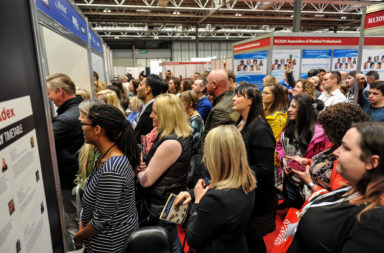Are some votes more equal than others?
I wanted to respond to Brendon O’Neill’s piece in The Big Issue last week (March 9-15 edition) about his view that different identities within the electorate shouldn’t matter. I agree with the principle but I don’t see how they can ever be ignored and I’d therefore like to remind him of the importance of recognising different identities and communities. We’re kidding ourselves if we consider everyone to be ‘the same’ or to have the same political interests or needs.
O’Neill’s premise is that having the vote makes us all equal in the polling booth and sites the principles of the so-called Levellers of the 17th century who managed to instigate the first fundamental movement towards electoral equality. He rightly points out that once in the actual polling booth that “the cleaner has the same power as the monied man” adding that “We’re all being put into biological or generational boxes. It’s no longer ‘one person, one vote’ – it’s one gay person, one vote; one pensioner, one vote. It’s expected we’ll vote according to the supposed interests of our race, sex or generation.” Well, of course we will; ever heard the one about the turkey that voted for Christmas? Me neither.
O’Neill argues that politicians should start to think less about the different communities that make up the electorate. I disagree. I don’t think that it happens enough. Even something as simple as left wing versus right wing politics has been shown not to work. What’s the phrase uncle Monty uses in the classic ‘Withnail and I’ scene? Oh, yes: “Shat on by Torries, shovelled up by Labour”. In other words, it’s four years of tax misery from one lot followed by four years of cuts and austerity from the other – a total cancelling-out process and lack of any real progress at all. (And if I may say, a fundamental reason behind political disconnect.) Who to vote for? Who cares? What’s the point? and so on.
Whilst it’s true that Harriet Harman’s pink bus, designed to get women interested in politics was observed to be a slightly patronising shade of pink, at least it was an effort to connect with a group that has its own political dynamic. Yes, women do think differently to men and have every right to do so and furthermore have every right to be taken seriously as a community in their own right within the populace.
How about a purple bus in keeping with the spenders of the so-called ‘purple pound’? Surely the 11 million-plus disabled people in the UK would be thrilled to see even a tokenistic outreach programme to discuss their needs.
One person one vote isn’t quite the case. A business owner can vote for the party that wants to reduce business rates. A working mother can vote for the party that wants to protect maternity rights or access to subsidised childcare and so on.
Who does a disabled person vote for? The fact is that disability issues are rarely discussed properly and therefore a disabled voter does not get the opportunity to vote for the party that will deliver a better lifestyle for them – and therefore the disabled voter can be thought of as not having an equal vote at all.
The answer to voter equality is to understand and protect the different communities within the electorate and have a collection of well considered, robust policies that can be genuinely tested through electoral process. Every eligible person deserves their vote but we need a system that listens and responds to the demands of equality and the landscape of diversity rather than overly simple ‘one size fits all’ policies that end up fitting nobody in particular.



